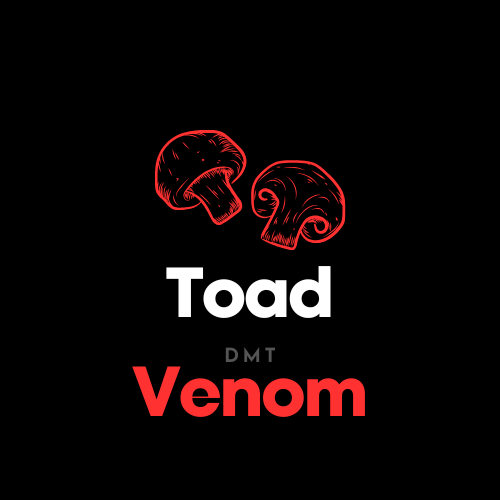Blog
What is it like to take DMT?
What is it like to take DMT?
That’s tricky. “Much of the experience is ineffable because it seems to access parts of my brain that I don’t have human language to describe,” said Amy Shula, 40, a Denver-based clinical research program manager.
Shula said that she’s smoked or inhaled DMT around 20 times total. Like Bell, she said every DMT experience is unique, but she still recalled aspects of her first trip.
“There are levels to it,” she said. “After the first hit, my body gets very relaxed and colors get very vivid.” The second inhale added new layers of experience. “I feel weightless, as if I’m in water but someone or something is holding me,” she said. “And then it’s as if I’m looking at a geometric matrix—a somewhat transparent matrix that encompasses everything.”
Shula said she usually tries to inhale and hold three or four hits, but the force of the trip often prevents her from getting there. At a certain point, the world around her is gone. “I go into a kind of hyperspace, not like a tunnel, but like I’m moving through space at lightspeed, and seeing colors and shapes that I’ve never seen before,” she said. “There’s a sense of oneness with everything—like I’m the universe experiencing itself.”
Other users describe similar sensations. “I died, or at the very least, my soul left my body and arrived in what can only be described as a divine realm,” said Tim Leonard, 39, a Detroit-area entrepreneur. “I saw a translucent human skull with an active brain emitting colors and energy. The brain was connected to the heart, which was also bursting with color.”
Some Pointers for Not Overdoing It on Party Drugs if It’s Been a While
“The message,” he said, “was that being born human is a great gift. It’s a miracle that we exist and that we are conscious of our own existence.”
When it comes to the so-called “breakthrough” trips associated with higher doses of the drug, some user experiences are remarkably—almost eerily—commonplace. These often include a feature that is sometimes known as “the encounter.”
“Not infrequently, people have these experiences in which they’re encountering some kind of sentient autonomous entity,” said Johns Hopkins’s Griffiths.
Shula described one trip where she saw a “godhead” that resembled an Aztec mask. “I felt safe and held by it, and it was showing me that it was about to lead me on a journey,” she said.
The specifics of these encounters vary from user to user, and not everyone has them. But these sorts of encounters are so commonplace among DMT users that Griffiths has published research on their features. His surveys of DMT users have found that the entity encounter tends to be mostly visual and telepathic. The most common descriptions of the entity are as a “being,” a “guide,” a “spirit,” or an “alien,” but it can take just about any form—including some that are nonsensical or frightening. (Terrance McKenna, the ethnobotanist and noted psychedelics researcher, famously described the entities he encountered as “machine elves.”)
“There’s usually some kind of communication with this entity, and it’s normally a hugely compelling experience,” Griffiths said. “People report that it’s altered their entire fundamental conception of reality.” Oddly, he said that descriptions of these encounters are often bizarre or chilling. “And yet the primary emotions people feel are love and kindness and joy, and the attributes they ascribe to the entity are things like consciousness, benevolence, and sacredness,” he said.
This all maps very tightly onto Leonard’s experience. Over and over again, he used words like “love” and “beauty” to describe his trip. “My perception of life has changed,” he said. “Love and gratitude and intelligence seem to be the root of our creator and of all creation.”
Even after the hallucinatory effects of DMT have faded, people tend to believe that the encounter they had was real. Many say it felt more real than everyday consciousness, and most—including Leonard—continue to believe that the entity they communicated with still exists… somewhere. “They don’t regard it as a dream or something fanciful,” Griffiths said.
He mentioned Rick Strassman, a clinical associate professor of psychiatry at the University of New Mexico and noted DMT researcher. In his bestselling book DMT: The Spirit Molecule, Strassman soberly entertains the idea that parallel universes might actually exist, and that DMT somehow allows users to access them. “That’s a pretty radical thing for a physician scientist to propose,” Griffiths said. “But so many of his study participants had these experiences that he couldn’t just dismiss them.”
Finally, DMT often engenders a sense of oneness or connectedness with other things and with the universe.
It’s noteworthy that many people who use Ayahuasca report many of these same experiences, although often in more abstract or symbolic forms—sort of like a “lite” version of the DMT trip. Meanwhile, the experiences of users of 5-MeO-DMT could be described as even stronger or more profound.
“DMT is typically called the spirit molecule, while 5-MeO is described as the God molecule,” said Davis, the Ohio State professor. “With 5-MeO, people report a complete dissolution of the ego and complete unification with God and the universe and everything that’s ever existed. It’s a more robust and dramatic transformation.”

